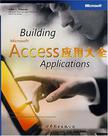Microsoft ACCESS应用大全
2007-6
北京世图
约翰·维斯卡斯
679
Develop flexible databases that can evolve with changing business requirements. Get fully functional database samples and table designs for four of the most common Microsoft Access database types--and use them as templates to create your own Access solutions. Database expert and Microsoft MVP John L. Viescas provides the detailed guidance you need to customize your own solutions from these application types: Membership Tracking Inventory Management Customer Support Registration Management For each type, you'll walk through typical usage scenarios, design considerations, and common pitfalls. You'll examine the logic behind each application's table design, and learn how to adapt it for your own Access solution.
John got started in computing long before many of the current employ-ees at Microsoft were starting grade school. It amazes him to think that the iaptop he carries with him when he travels has more than 30,000 times the memory, has 1,000 times the disk space, and is many times faster than the first so-called mainframe computer he used to teach him-self an obscure language called Autocoder.
Part I Designing Your Application 1 Designing Your Tables 2 Creating the User Interface 3 Designing a Client/Server ApplicationPart II Building a Membership Tracking Application 4 The Membership Tracking Application 5 Verifying Names 6 Tracking Member Activities 7 Tracking Member Status 8 Sending Out NoticesPartlll Creating an lnventory Management Application 9 The Inventory Management Application 10 Ordering Items from Inventory 11 Generating Purchase Orders 12 Posting Received Items into Inventory 13 Creating Customer Invoices 14 Designing Sales and Inventory ReportsPart IV Implementing a Customer SUpport Application 15 The Customer Support Application 16 Organizing Customer Information 17 Capturing Support Cases 18 Tracking Reminders 19 Reporting and Analyzing Support CasesPart V Creating a Registration Management Application 20 The Registration Management Application 21 Scheduling Courses 22 Scheduling Students 23 Printing and E-Mailing Schedules 24 Producting Student InvoicesPart VI Appendixes A Recommended Reading B Sample Database Schemas C Function Reference D Uuderstanding SQL E Implementing Generic Features
本书为英文版。本书为读者提供了完整可行的样本数据库用作创建有个性的Access解决方案模板,并有专家的设计指导。书中介绍了6种最常见的数据库类型的使用情景、设计考虑事项和典型问题的解决方案,为读者提供了切实可行的技术支持和帮助。
